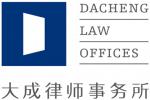The Company Law establishes a judicial system of litigation for companies’ dissolution in mainland China. The trigger for such legal actions is a serious and unbreakable “company deadlock”. In the Provisions for Causes of Action in Civil Cases, the Supreme People’s Court classifies it as cause of action No. 263, a “company dissolution dispute”.
Entities involved
A company deadlock is a dispute situation in which a company’s decision making mechanism breaks down due to a conflict among shareholders or directors.
The plaintiff in a legal action for a company’s dissolution is generally a shareholder that finds it impossible to exercise its decision making rights or control. Although such actions result from a dispute among shareholders or directors, the defendant must be the company itself, not the shareholder or director with which the plaintiff is in conflict. Such shareholder or director may be named as a third party or added by the court as a materially interested “third party”.

Shi Anning
北京大成律师事务所
高级合伙人
Senior Partner
Dacheng Law Offices
The claim of the party seeking dissolution usually falls along these lines: serious difficulties have arisen in the operation and management of the company; the company is caught in a deadlock that cannot be resolved by other means; and the party’s interests have suffered material harm. This party emphasises that the company’s governance and decision making mechanism have broken down, resulting in the company being caught in a deadlock. The defendant and its actual controlling shareholder or controller will generally defend that the company is in a good operating state – operating normally and making a profit; the company can pay its taxes normally and its employees normally, so the condition for dissolution of “serious difficulties have arisen in the company’s operation and management” is not constituted.
It can be seen that one of the core issues in a legal action for a company’s dissolution is how to correctly determine the essential meaning of the statutory condition, that is, “serious difficulties have arisen in the company’s operation and management”.
Cause of action
The author believes that, regarding a company deadlock, it is important to correctly understand the legislative intent of article 183 of the Company Law concerning a shareholder requesting a company’s dissolution. The cause of a legal action instituted by a shareholder to dissolve a company must be that serious difficulties have arisen in the company’s operation and management, and its continued existence would cause the shareholder’s interests to suffer a material loss. The severe difficulties in operation and management here should not be understood to mean a lack of funds, serious deficit or other such operational difficulty, but rather understood as serious internal impediments to management, mainly being a breakdown in the shareholders’ meeting mechanism that makes it impossible to reach decisions on the company’s operation and management.
Judicial interpretations of the Company Law expressly enumerate four circumstances where dissolution should be carried out, the main ones including: serious difficulties in a company’s operation and management arising due to a deadlock among shareholders or directors – namely, the company finds itself in a paralytic state; the corporate governance structure that embodies the company’s self governance has completely broken down, making it impossible to carry on business activities in a normal manner; and if it were to continue to exist, it would cause a loss to the interests of the actual beneficiaries of the company, i.e. the shareholders.
In this case, the shareholders should be granted the means of remedying the situation by instituting a legal action to dissolve the company and protect their own lawful rights and interests. If a shareholder, when instituting a legal action to dissolve a company, expresses the reason for doing so as serious deficits in the company’s operations, or that its rights and interests as a shareholder have been harmed, or that the company was not liquidated after revocation of its business licence, or other such reason, the court will refuse to accept the case because the above-mentioned do not fall within the causes for the institution of a legal action to dissolve a company as specified in the Company Law.
In practice, a “company deadlock” may be serious to the point where a single shareholder controls the company for an extended period of time and the other shareholders are powerless to participate in the decision making and business activities, resulting in the company “morphing” into a “one-person company” of the controlling shareholder. If this situation is allowed to continue, it would amount to protecting the arrogation of power by the company’s actual controlling shareholder, thereby objectively undermining the company investment legal system. Protection of such illegal acts clearly runs counter to the legislative objectives of the Company Law.
Special equity and governance structure
In judicial practice, there is one unique corporate equity and governance structure: the company has only two shareholders, each holding 50% of shares; one of the shareholders serves as the company’s legal representative and executive director, thereby becoming the company’s real controller.
The decision-making mechanism set up by the articles of association of such a company is one where resolutions of the shareholders’ meeting require the votes of shareholders holding more than one-half of the voting rights for adoption, but for resolutions on the increase or reduction of the company’s registered capital, its merger, division or change in corporate form, or amendment of its articles of association, the votes of shareholders representing at least two-thirds of the voting rights are required. The shareholders exercise their voting rights at shareholders’ meetings in proportion to their capital contributions.
It can be inferred that the above-mentioned “more than one-half” cannot include “one-half”, otherwise either party could adopt a valid company resolution on its own. Where the other party was unwilling to implement such a resolution, it could in turn adopt on its own a valid resolution completely opposite to the preceding resolution. In this manner, it would essentially be impossible to ever produce a valid resolution that could be implemented.
The author believes the above-mentioned unique corporate equity and governance structure has an obvious “intrinsic” defect, because, where each party holds 50% of the equity, either party can veto any motion of the other party, and once a company deadlock arises, it is difficult to break through internal remedies. In such a situation, it would seem that instituting a legal action to dissolve the company is the only feasible means of resolving the company deadlock. We will continue to explore legal actions to dissolve companies in the next issue.
Shi Anning is a senior partner at Dacheng Law Offices in Beijing
北京市朝阳区东大桥路9号侨福芳草地D座7层
邮编:100020
7/F, Building D, 9 Dongdaqiao Road
Chaoyang District, Beijing 100020, China
电话 Tel: +86 10 5813 7799
传真 Fax: +86 10 5813 7788
电子信箱 E-mail:
anning.shi@dachenglaw.com
www.dachenglaw.com






















